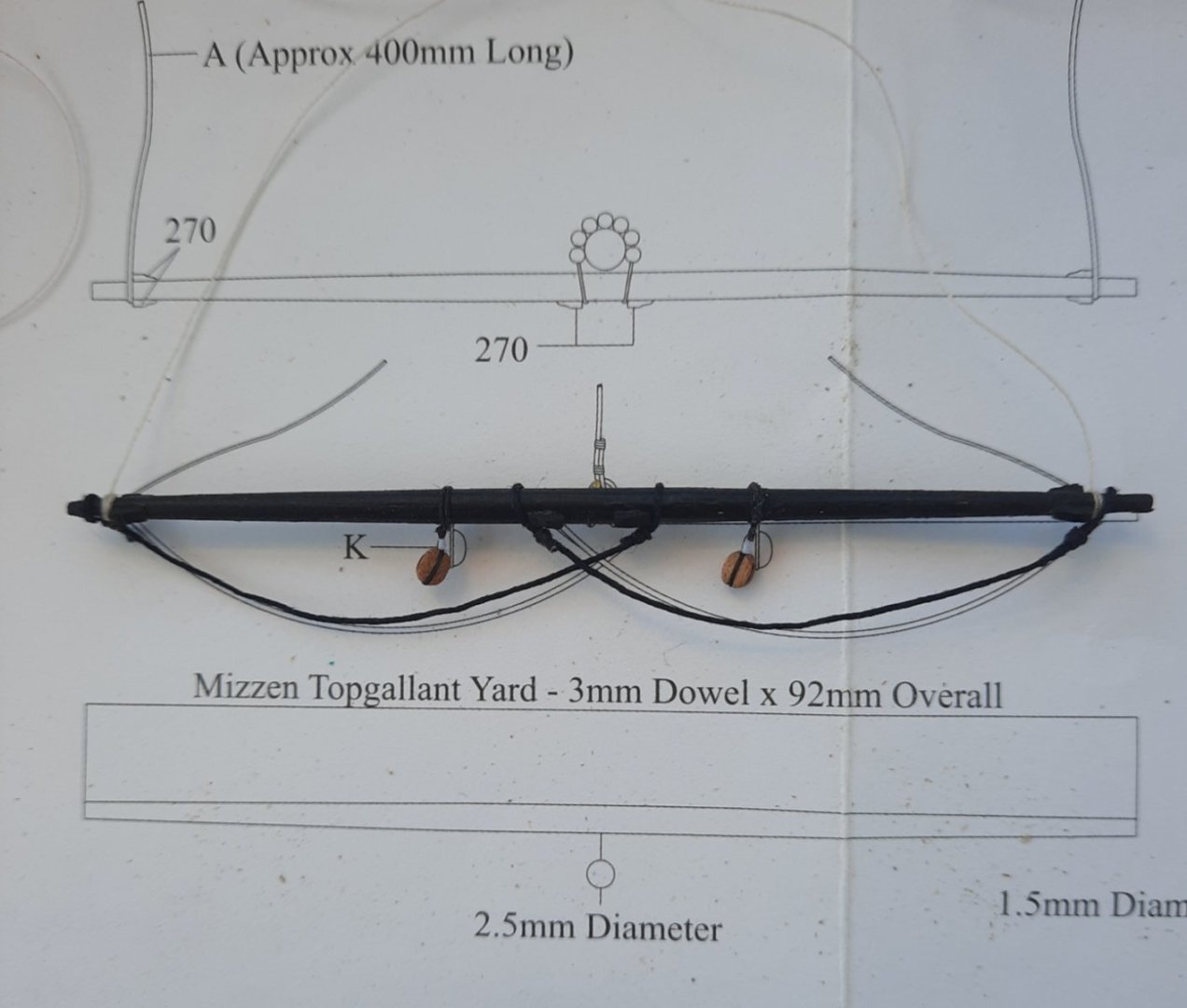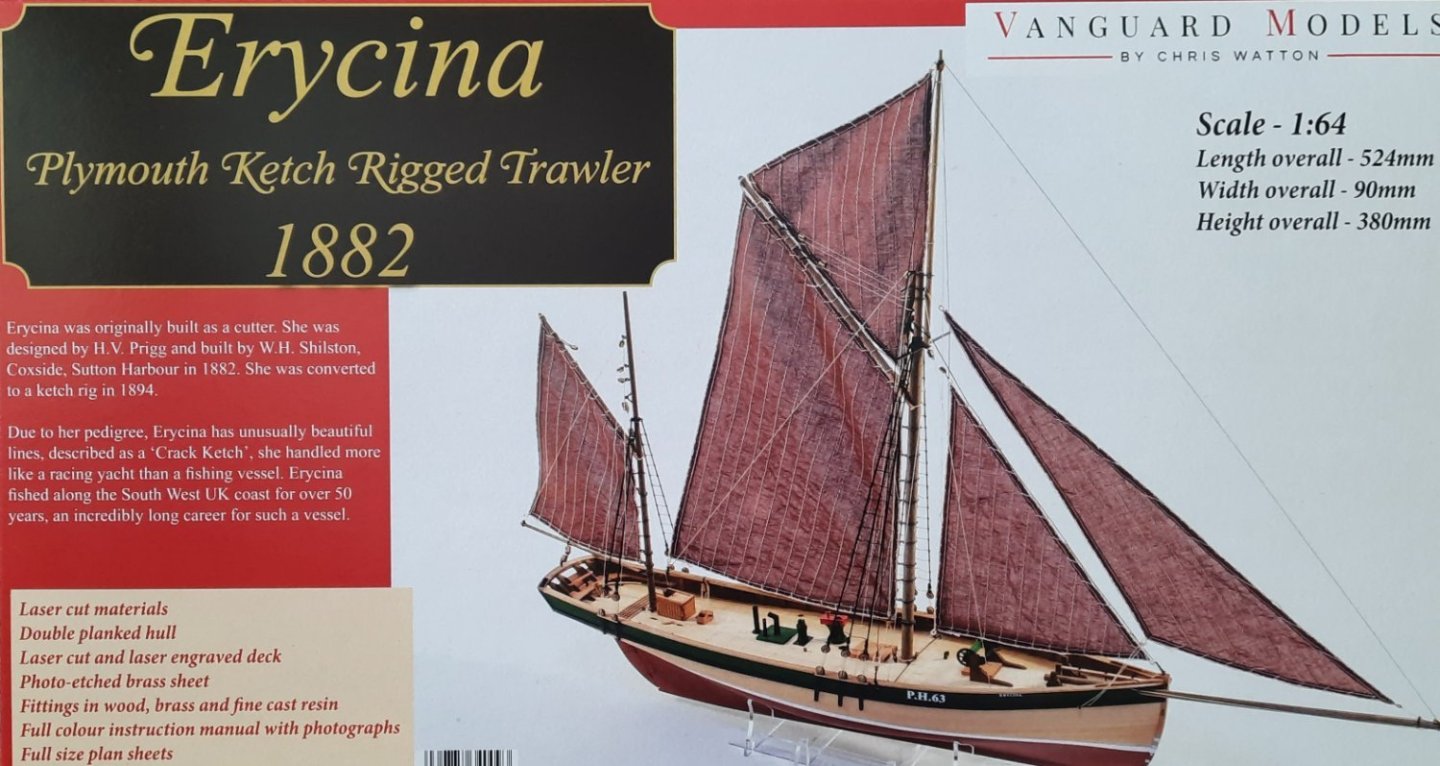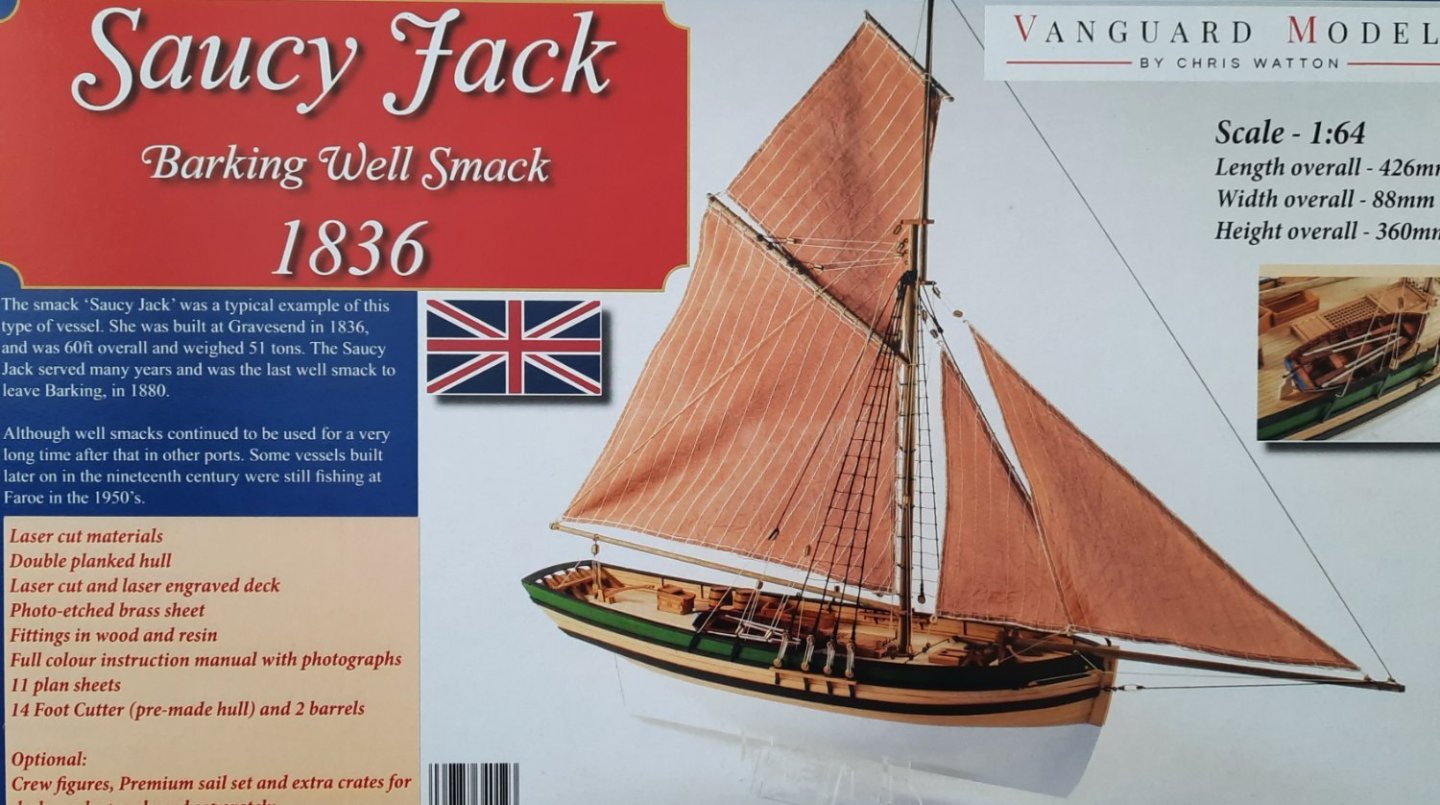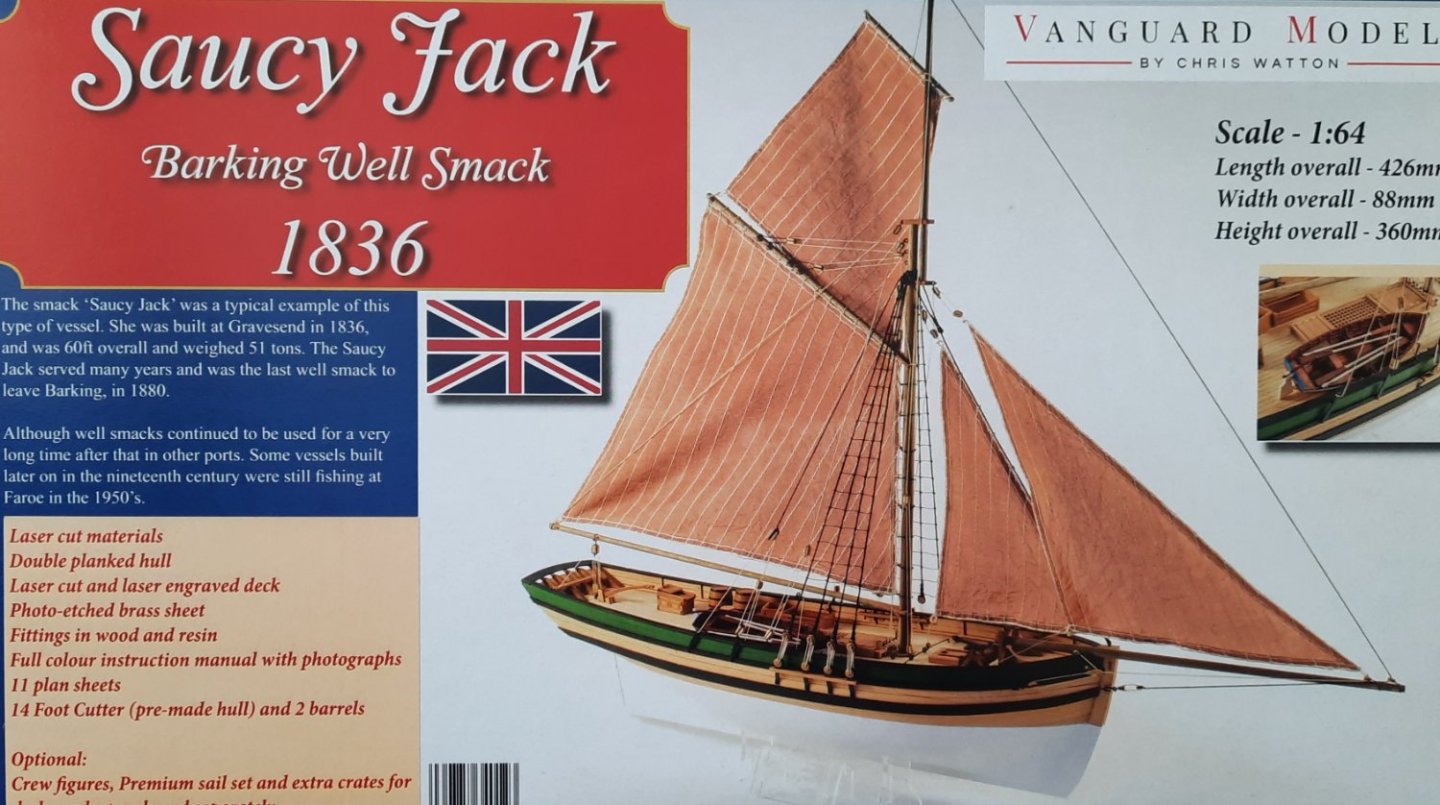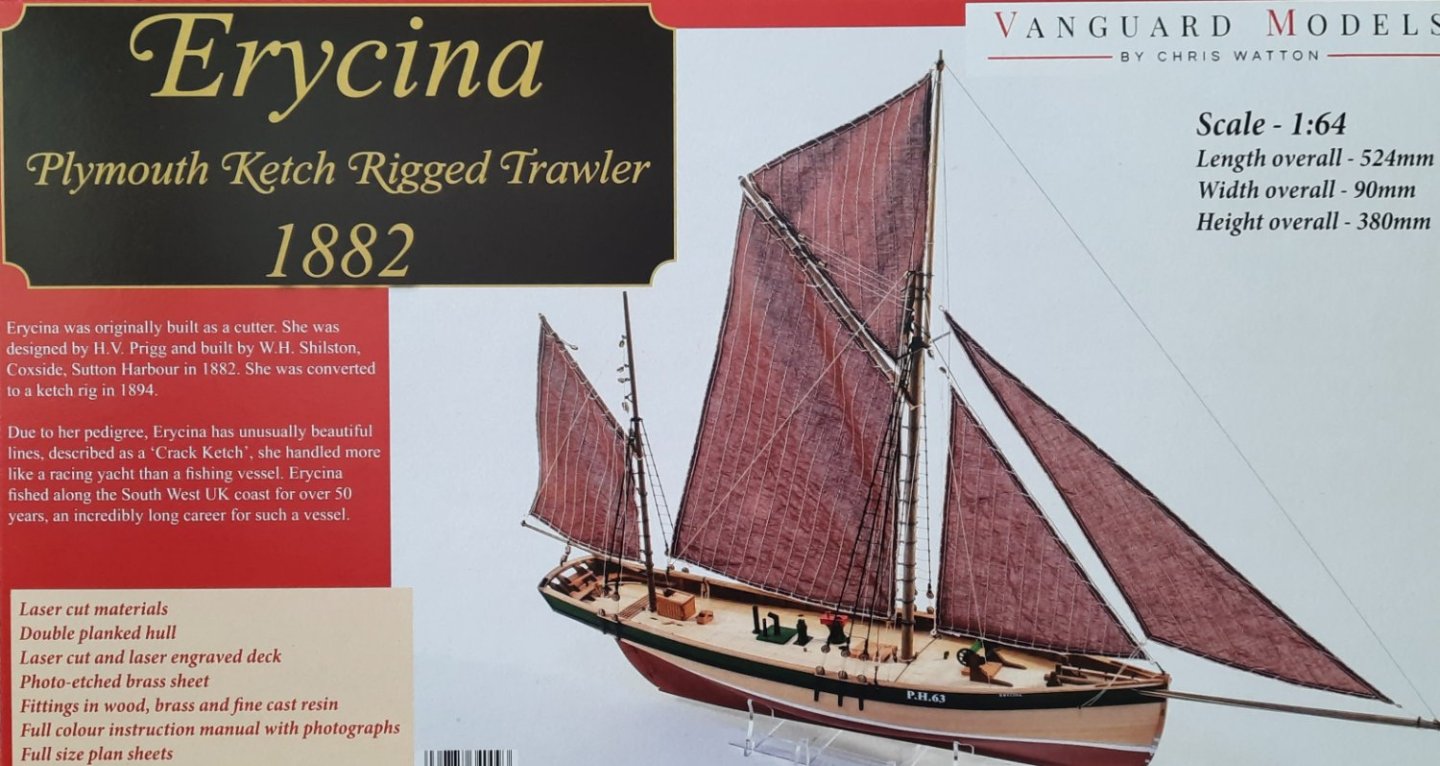-
Posts
3,158 -
Joined
-
Last visited
Content Type
Profiles
Forums
Gallery
Events
Everything posted by Glenn-UK
-
Mizzen Topgallant Yard I managed to sneak 30 mins in the shipyard this morning and completed all work on the mizzen topgallant yard. After fitting the yard fixtures and fittings I held the yard in quadhands and used a couple of clamps to shape the foot stirrup's. Once I was happy with the foot stirrup shaping I applied a coat of a diluted pva solution. Overall I think the end result passes muster.
- 476 replies
-
- sphinx
- vanguard models
-
(and 1 more)
Tagged with:
-
Top and Topgallant Yard Block Manufacture It has been a busy period over the last 2 days as I have been seizing a multitude of blocks for the various top and topgallant yards. I had to push on to complete the task before my holiday next week. I also realised I would have precious little time in the shipyard on Friday or Saturday as we are looking after three of our 4 grandsons. Thankfully the ship building gods were looking down on me and allowed me to work without any major mishaps or misadventures. I started with the Mizzen Top and Topgallant yards which have been painted black. There are only two 3mm single blocks required for the Mizzen Topgallant Yard. There are 11 blocks in total required for the Mizzen Top yard. As can be seen in the photo below the blocks have been seized and are ready to be secured to the yards. I am planning to secure each block to their respective yards using clove hitch knots. With the Mizzen block seizing completed I moved on to seizing the various blocks for the the main top and topgallant yards. There are only two 3mm single blocks required for the Main Topgallant Yard. There are a total of 11 blocks required for the main top yard. As can be seen in the photo below the yards have been painted black and all the blocks have been seized and are ready to be secured to their respective yards. I am planning to use a clove hitch knot to secure each of the blocks to the yards. I then moved on to seizing the various blocks for the the fore top and topgallant yards. There are only two 3mm single blocks required for the Fore Topgallant Yard. There are a total of 11 blocks required for the fore top yard. As can be seen in the photo below the yards have been painted black and all the blocks have been seized and are ready to be secured to their respective yards. I am planning to use a clove hitch knot to secure each of the blocks to the yards. The final picture shows all the top and topgallant yards
- 476 replies
-
- sphinx
- vanguard models
-
(and 1 more)
Tagged with:
-
Looks nice, any planking issues will not be seen once the hull is painted. I am looking forward to starting mine soon and will use you build log as a reference. I just have a few more weeks left on the Sphinx before I can start both the Erycina and Saucy Jack. This is the current build state of my Sphinx. I just need to add the blocks to the top and topgallant yards before I can rigging the yards which will be the final task. Fingers cross I can complete this by the end of next month.
- 59 replies
-
- saucy jack
- fishing smack
-
(and 2 more)
Tagged with:
-
Top and Topgallant Yards - Woodworking For the last two days I returned to the woodworking workshop to make all the top and topgallant yards, plus the staff ensign. Apart from creating a lot of sawdust as each yard was turned on my Proxxon mini lathe the task was completed without any problems. Once I had completed shaping all the yards all the cleats and ironwork were added. The yards are now ready to be painted black which will be done later today (after tea) as it is now time for my daily afternoon run. Once they have been painted black I will spend the few days seizing and adding the various blocks and foot stirrups rigging to each yard. I should be able to complete this work before my holiday next week. With a brass rod inserted in each yard the completed top and topgallant yards were pinned to the yards for a photo shoot. The Sphinx looks resplendent with all the yards pinned in place. The Staff Ensign The Mizzen top and topgallant yards The main top and topgallant yards The fore top and topgallant yards
- 476 replies
-
- sphinx
- vanguard models
-
(and 1 more)
Tagged with:
-
Main and Main Preventer Stay Tackle As indicated in my previous post I had made an fundamental error with belaying the main topmast stay and preventor as I had missed adding the tackle arrangement. The blocking arrangement for the main and main preventer stay tackle is shown in the picture below. Using the same techniques and methods which I have detailed in some of my previous posts I spent about an hour making the various block assemblies, as can be seen in the photo below. With the blocks assembly complete I then set about removing the main topmast stay and preventor from the bitt crossbeam. This turned out to be a relatively pain free 5 minute activity. The stay and preventor lines were then seized to their respective double block assemblies. I was able to hold the blocks in the quad hands which meant adding the seizing was an easy task to complete. You can see the end result of one of the seizing's in the photo below. With the double blocks added to the stay and preventor the two single blocks were hooked in to place. It was then a simple matter to run the 0.5mm natural thread through the blocks before belaying the free end to a belaying pin on the bitt crossbeam. Each side took about 15 minutes to rig with most of the time spent securing the free end around the belaying pin. Main Stay Tackle Pictures Main Preventer Tackle Pictures Over the next few days I will be turning my attention to the manufacture of 6 yards for the three top and topgallant masts. It will be nice to have a break from the rigging and hopefully I can complete the work before my luxury French river cruise next week.
- 476 replies
-
- sphinx
- vanguard models
-
(and 1 more)
Tagged with:
-
Rigging Plan Sheet 2 Completed (or so I thought!) I was really pleased with my morning work thinking I had finally completed all the tasks shown on rigging plan sheet 2. This was proven to be incorrect when I then discovered I had made a error with the belaying of the main stay and preventor. This error will be covered later on in the this post. Mizzen and Man Topgallant Stays This morning I pressed on with completing the work for the mizzen topgallant and main topgallant mast stays. These stays are to be belayed to the main and fore platforms respectively via a double thimble arrangement with the lower thimble secured to the platform eyebolt via a hook. Therefore the first task was to add a hook to the bottom thimbles. This did not take too long to complete and both completed thimble / hook arrangements are shown in the photo below. The next task was a little bit more complicated which was to add the other thimbles to the end of the stays. The main topgallant mast stay is fed down to the foremast platform via a thimble located on the fore topmast therefore adding the thimble to the end of the main topgallant mast stay was not so bad with the aid of the quad hands. The mizzen topgallant mast stay is fed down to the mainmast platform via a thimble located on the main mast therefore adding the thimble to the end of the mizzen topgallant mast stay was much more difficult as there was little thread available so I was unable to use the quad hands. In the end I decided to remove the stay from the mizzen mast so I could add the thimble without restrictions. Once the thimble had been added I was able to rerun the stay before making a new loop which was then placed over the mizzen mast. The bottom thimbles were then hooked to their respective eyebolts on the platforms. Two lengths of 0.1mm natural thread were then cut (approx 25cm each). It was then a case of using these threads to link both of the stay thimbles with their respective hooked platform thimbles. It was a bit awkward due to the limited access but I took my time and without any mishaps the task was soon completed. The photo below shows the rigged double thimble arrangement for main topgallant mast stay belayed to the foremast platform. The photo below shows the rigged double thimble arrangement for mizzen topgallant mast stay belayed to the mainmast platform. With the work on rigging all the stays finished I took some photos showing the completed work and I have attached a couple which can be seen below. The Sphinx is really taking shape. Checking The Plans Happy that the work was complete with regards to the stays I decided to double check the rigging plans. My eyes were then drawn to a detail for the main and main preventer stay tackle, as shown in the picture below. I was not overly concerned and thought it was something I needed to add. Whilst looking at the picture I noticed there was a number 1 and 2 shown at the top and also a 1 and 2 shown at the bottom which did confuse me somewhat. I soon realised I had made an error with how I had belayed the main topmast stay and preventor. When adding the main stay and preventor I had noted the 1 and 2 on shown on the stay and preventor lines and then wrongly assumed they should be taken to belaying points 1 and 2. The picture below shows the stays and preventor with the 1 and 2 identifiers which actually relates to the numbers shown at the top of the main and main preventer stay tackle. The 1 and 2 shown at the bottom of the main and main preventer stay tackle are the belaying points. The belaying point 1 and 2 for the main and main preventer stay tackle are shown in the picture below. Choosing not to use the belaying pins I wrapped the stay and preventor (minus the main and main preventer stay tackle arrangement) around the crossbeams, as shown below. I should be able to remove the both the stay and preventor belayed to the bitt crossbeam without too much trouble. It will then be a case of making up the required blocks and completing the rigging as per the plans.
- 476 replies
-
- sphinx
- vanguard models
-
(and 1 more)
Tagged with:
-
Great work, you have a very nice looking model
- 118 replies
-
- Duchess Of Kingston
- Finished
-
(and 1 more)
Tagged with:
-
Fore Topgallant Mast Stay A length of 0.5mm black thread is used for the fore topgallant mast stay. The first step is to make a loop at one end of the thread which is place over the fore topgallant mast. Once the size of the loop as been adjusted so it is a goof fit over the fore topgallant mast the free end of the thread is fed through a 3mm single block located at the end of bowsprit, as shown in the photo below. Once the thread has been feed through the 3mm block the free end is then belayed, via a double thimble arrangement, to an eyebolt located on the end of the bowsprit cap. In the picture below I am in the process of adding the seizing a thimble to the end of the fore topgallant mast stay. The thimble is held in the quad hands as the seizing is added. The other thimble had already been secured to the end of the bowsprit cap during the manufacture of the bowsprit. Therefore the next task was to take a length of 0.1mm natural thread and tie one end to a thimble (at the bowsprit end). I then proceeded to link the two thimbles, as can be seen in the next photo. I have found it important to set the required tension in the stay early on in this process. After a few passes of the thread between the two thimbles the free end was tied off and the excess thread trimmed away. The final photo shows the completed stays and preventors for the fore mast, topmast and topgallant mast. Completing the main and mizzen topgallant mast stays will be a bit more fiddly due to the limited access around the fore and main platforms. That said I think I should be able to complete these stays in the next day or two. Once complete my attention will then turn to the manufacture of top and topgallant yards which I should be able to complete before my wife and I leave for our trip to France at the end of the month.
- 476 replies
-
- sphinx
- vanguard models
-
(and 1 more)
Tagged with:
-
Topgallant Stays WIP I have now completed the work with regards adding the main and fore topmast stays and preventors. The first photo shows the fore topmast stay secured to the hull. There is an identical blocking arrangement on the starboard side for the topmast preventor. I did describe the method I used to seize the 3 block arrangement in my last two posts. You will probably note that I did make a slight miscalculation when added the double block section to the fore topmast stay as it is a bit closer to the single block section that I had planned. That said I think it looks OK so I have no plans to redo it. With the topmast stay work completed it was time to move on to the topgallant mast stays. The mizzen topgallant stay feds through a thimble on the main mast and will then be belayed to the main mast platform via a double thimble arrangement. A hook will be added to the lower thimble so it can be added to one of the platforms eyebolts. The main topgallant stay feds through a thimble on the fore topmast and will then be belayed to the fore mast platform via a double thimble arrangement. A hook will be added to the lower thimble so it can be added to one of the platforms eyebolts. The fore topgallant stay feds through a single block located right at the end of the bowsprit before being belayed to the bowsprit cap via a double thimble arrangement. I have added all the topgallant stays and they have been run down to their retrospective belaying points. The next two photos shows how the Sphinx is now looking. You can see some of the various tweezers I have used to apply some tension to the stays. My next task will be to add the double thimbles to each of these topgallant stays The final photo shows the Sphinx on my workbench getting ready for the photo shoot. Once I have completed all the work on the stays I turn my attention to all the yards and my first task will be to manufacture all the top and topgallant yards. Once that is done the actual yard rigging should not take too long to complete, famous last words!!
- 476 replies
-
- sphinx
- vanguard models
-
(and 1 more)
Tagged with:
-
Take two - Fore topmast stay block arrangement I detailed the method I used for seizing the fore topmast stay and preventor blocking arrangement in my last post. I also indicated that I thought the seizing was a bit to chunky and that I would need to redo it. Take two turned out much better as can be seen in the photo below. When adding the eyebolt I used black tying thread this time rather than the 0.1mm natural thread. This does produce a much better end result. I also used ratline thread for the seizing to link the 4mm block to the 5mm block which again produced a much better result, maybe it is still a tad too chunky, but it is Ok.
- 476 replies
-
- sphinx
- vanguard models
-
(and 1 more)
Tagged with:
-
You might be able to release it if you drip some acetone down to soften the ca joints and then to gently prise it apart with a sharp blade, but it is risky. I think I would be more inclined to leave and remove straighten the crooked edge. You can add filler or wood offcuts to fill any gaps before painting. Great work nonetheless. Glenn
- 59 replies
-
- saucy jack
- fishing smack
-
(and 2 more)
Tagged with:
-
Fore Topmast Stay and Preventor Planning is the cornerstone of any success with regards to rigging, as I have learnt through many hours of rework when I have not planned ahead. With regards to the fore topmast stay and preventor I took a good look at the rigging plans. As can be seen in the photo below both the stay and preventor are fed through holes located on the either side of the bowsprit bee. Once the stay and preventor have been fed through their respective bowsprit bee holes then are belayed to thimbles located on the end of the 5mm / 4mm single block arrangement. A second 5mm single block is secured to the hull via an eyebolt. The blocks are then linked together using 0.25mm natural thread and the free end is belayed to one of bow catheads. The 3 block plan arrangement and rigging is shown in the photo below. The first task was to check the 0.25mm natural inter-block rigging thread could be fed through the various block holes. As seen in the photo below the thread would pass through the block holes without any problems. I decided to start with securing the single 5mm block to an eyebolt. With the 5mm block held in the quad hands a length of 0.25mm black thread was wrapped around the block. A long length of 0.25mm natural thread was also added at this stage, as shown in the photo below. Using some white fly tying thread the block was seized, as can be seen in the photo below. One of the two black thread end was trimmed. The other black thread will be seized to the eyebolt later on in the process. With reference to the next photo the 5mm block was reversed in the quad hands so the 0.25mm natural rigging thread could be seized, creating a pseudo thimble I used some ratline black thread to seize the rigging thread. Once seized the excess rigging thread was trimmed as can be seen in the photo below. It is now time to feed the black thread through the eyebolt. With the eyebolt in place black thread is held in place on the side of the 5mm block as shown in the next photo and is now ready to have the seizing added. I decided to use some 0.1mm natural thread to add the eyebolt seizing. I did check with the rigging plan sheets to ensure the eyebolt was correctly aligned with regards to the block, as can be seen in the two photos below. I think it was a mistake to use 0.1mm natural thread for the seizing as it looks a bit to bulky. Turning my attention to the double block arrangement I started with making a thimble which will be used to belay the stay / preventor thread. I took a length of 0.25mm black thread and using some white fly tying thread made a loop. The two free ends of the black thread were then pulled which reduced the loop diameter to the required size. It is a good idea to check stay / preventor would pass through the completed thimble, as shown below. Next the thimble was seized to the 5mm single block which is held in position using the quad hands. With the 5mm block held in one of the quad hands the 4mm block was positioned and held in place with another quad hand and the black seizing thread was wrapped around the 4mm block and seized, as can be seen in the two photos below. Again I think the seizing looks to bulky The final photo in this post shows how the blocks will be rigged. As I am not totally happy with how these finished blocks look I will redo to see if I can make a much better job of the seizing.
- 476 replies
-
- sphinx
- vanguard models
-
(and 1 more)
Tagged with:
-
Looks good so far. Hope to start my build in October, just need to finish rigging the Sphinx first.
- 59 replies
-
- saucy jack
- fishing smack
-
(and 2 more)
Tagged with:
-
Backstays Completed I have had another good two days in the shipyard and I completed the starboard backstays. This represents another major milestone as all the work shown on rigging plan 1 is now complete. The top mast stays threads have been added. The mizzen topmast stay has been completed. The main and foremast topmast stay and preventors are now ready to be belayed. The main topmast stay and preventor is straight forward as they are just belayed to one of the fore bitts. The foremast stay and preventor requires a bit more work as they are secured to the hull via a block arrangement. In the pictures below I have used some tweezers to apply some tension to the main and fore topmast stays and preventors.
- 476 replies
-
- sphinx
- vanguard models
-
(and 1 more)
Tagged with:
-
Port Side Backstays After two days hard work I have completed all the work related to all the port side backstays. The first picture show the mizzen topgallant mast backstay. This belays to an eyebolt fixed to the outside of the hull via two 2.5mm thimbles. The next photo shows the main breast backstay. The backstay is belayed to the main channel via three blocks and two eyebolts. The next photo shows the main shifting backstay and the main topgallant mast backstay. The main shifting backstay is belayed to the main channel via two blocks and an eyebolt. The main topgallant mast backstay is belayed to the channel via 3mm deadeyes. The next photo shows the work in progress, noting I have the rigging plan as a backdrop. Moving on to the fore breast backstay which is belayed to the fore channel via a three block arrangement and an eyebolt. In terms of completing this backstay I started by adding the 5mm single block to the end of the backstay. Next I took a length of 0.5mm natural thread and seized one end to a 4mm double block. The 0.5mm thread is then fed through the 5mm single block and the free end is seized around the bottom of one of the deadeyes. I then seized an eyebolt to a 3mm single block. I also added a length of 0.1mm natural thread to the other end of the 3mm block. A touch of ga gel was added to the eyebolt before it was pushed into place on the channel. The 0.1mm natural thread was then rigged between the two blocks and the free end was then belayed around the bottom of one of the 5mm deadeyes. The completed fore breast backstay rigging is shown in the photo below. The next photo shows a close up of the free ends (0.1mm and 0.5mm threads) seized around the bottom of the deadeyes. Next up was to add the fore shifting and fore topgallant backstays. The fore shifting backstay is belayed to the fore channel via a double block arrangement. The fore topgallant backstay is rigged via 3mm deadeyes. As there was a lot of sunlight coming through the conservatory windows tonight it was not possible to take a decent photo of the Sphinx. When reviewing the pictures taken I did quite liked the next photo, not sure why. Over the next few days I will add all the backstays to the starboard side. After that I will add the top and topgallant mast stays. Hopefully I can get all this done before I take an enforced break when my wife and I embark on a trip to France to enjoy a 5 star 8 day river cruise. On my return I should be left with making the top and topgallant yards and then rigging all the yards. I also have the three small boats to make. The Erycina and Saucy Jack kits have been left unopened and it is taking a great deal of will power not to peak inside as I know if I do that I will want to make a start on the build process.
- 476 replies
-
- sphinx
- vanguard models
-
(and 1 more)
Tagged with:
-
Topmast Ratlines I have had a really good morning in the shipyard and I was able to complete adding the ratlines to the port side main and fore topmast shrouds. As I have found it difficult to take a good picture of the completed topmast ratlines I decided to make a video whilst working on the fore topmast ratlines. I am not in the same league as Steven Spielberg when it comes to film making but it was fun to have a go. You will note, if you watch the video, there is a little bit of damage to one of the shroud lines just below where I am working. It would take me a good couple of weeks work (at least) to replace the shroud lines and to then redo all the lanyards and ratlines. I did redo the ratline however. Also as the model, when complete, will only be viewed by me from time to time (and occasionally by a visiting family member) I decided I could live with this damage. In the video you will see how I secure a ratline to the fore topmast using one clove hitch per shroud line. I am using reverse action tweezers to maneuver the thread which is my go to tool for the majority of the rigging tasks. You will note that I add a touch of ca gel to the first and last clove hitch knots. The video ends with the trimming of the excess ratline thread. YOUTUBE VIDEO LINK
- 476 replies
-
- sphinx
- vanguard models
-
(and 1 more)
Tagged with:
-
Main and Fore Topmast Ratlines Due to the current heatwave in the UK I have spent much more time in the garden over the last three days (dozing on the sunbed with a little bit of weeding). I did spent a little bit of time in the shipyard and I managed to complete adding the ratlines to the starboard side main and fore topmast shrouds. I should be able to complete the port side over the next couple of days. I found it was difficult to take a decent photo showing the ratlines. The fore topmast ratlines are shown in the next two photos. The topmast stays and backstays have been kept out of the way as the ratlines were added and these will fully rigged once the ratlines have be completed. The next photo shows the main topmast ratlines with the mizzen topmast in the background.
- 476 replies
-
- sphinx
- vanguard models
-
(and 1 more)
Tagged with:
-
I still have this task to look forward to. As always you make it look easy.
- 857 replies
-
- Sphinx
- Vanguard Models
-
(and 1 more)
Tagged with:
-
Hello Dave I like to run everyday, usually in the afternoon, and doing puzzle & wordle (not when I am running). Saturday I attend a local parkrun. I am a qualified UK Athletic run leader. I stopped taking out running groups a couple of years ago.
- 476 replies
-
- sphinx
- vanguard models
-
(and 1 more)
Tagged with:
-
Mizzen Topmast Ratlines I managed a hour in the shipyard today when our youngest grandson had a morning nap. I was able to add the ratlines to the mizzen topmast. I created a template for the template and added a 0 for the first ratlines to be added (every 5th one), a 1 for the next set of ratlines and finally a 2 for the final set of ratlines. The photo below shows the template in place with the 0 ratlines in place. It did not take too long to complete both sides. My son and daughter in-law return back from their holidays tomorrow so I should be able to return to my normal shipyard working hours on Friday. A typical shipyard day is 9am to 10am, 10:30am to 12noon, 1pm to 2:30pm and finally 6pm to 7pm
- 476 replies
-
- sphinx
- vanguard models
-
(and 1 more)
Tagged with:
-
After completing the Erycina I am sure you will be able to tackle a bigger build, such as Alert, Flirt or Duchess Of Kingston. I have already built Speedy, Alert and DOK. I have a few more weeks work left to complete the Sphinx, as can be seen in the attached two photos. I will enjoy building both the Erycina and Saucy Jack which will be a nice project before my next major build which will be the Indy. Chris is hoping the Indy kit will be ready for release by the end of the year.
- 88 replies
-
- Erycina
- Vanguard Models
-
(and 2 more)
Tagged with:
-
A great build log and I will continue to follow your progress with great interest. I hope to start build both the Saucy Jack and Erycina in early October and will set up a build log when I am in a position to start work. I just have the small matter of completing my current build (Sphinx). You are doing a good job so far and I am sure you will build a great looking model. Glenn
- 59 replies
-
- saucy jack
- fishing smack
-
(and 2 more)
Tagged with:
-
I am enjoying your build, you seem to be doing a great job so far. My next project, once I have finished building the Sphinx, will be two small fishing boats, the Erycina and Saucy Jack. The kits have arrived today and I will use you build log as a reference guide along with Jim prototype build log(s) when I get started, hopefully early October.
- 88 replies
-
- Erycina
- Vanguard Models
-
(and 2 more)
Tagged with:
-
No time in the shipyard this week as all my free time is taken up with looking after our youngest grandson (14 months old). He is having a nap at the moment so I have time for a quick post Sphinx plan update. As Chris's Vanguard Model sale ends on 6th Sept I thought it would be prudent to purchase a couple of kits. The Erycina lines really attracted me it was top of the list. I just like the name of Saucy Jack so I decided to buy that one as well. The UPS delivery arrived this morning but I do not expect to start work until late September earliest, probably October.
- 476 replies
-
- sphinx
- vanguard models
-
(and 1 more)
Tagged with:
About us
Modelshipworld - Advancing Ship Modeling through Research
SSL Secured
Your security is important for us so this Website is SSL-Secured
NRG Mailing Address
Nautical Research Guild
237 South Lincoln Street
Westmont IL, 60559-1917
Model Ship World ® and the MSW logo are Registered Trademarks, and belong to the Nautical Research Guild (United States Patent and Trademark Office: No. 6,929,264 & No. 6,929,274, registered Dec. 20, 2022)
Helpful Links
About the NRG
If you enjoy building ship models that are historically accurate as well as beautiful, then The Nautical Research Guild (NRG) is just right for you.
The Guild is a non-profit educational organization whose mission is to “Advance Ship Modeling Through Research”. We provide support to our members in their efforts to raise the quality of their model ships.
The Nautical Research Guild has published our world-renowned quarterly magazine, The Nautical Research Journal, since 1955. The pages of the Journal are full of articles by accomplished ship modelers who show you how they create those exquisite details on their models, and by maritime historians who show you the correct details to build. The Journal is available in both print and digital editions. Go to the NRG web site (www.thenrg.org) to download a complimentary digital copy of the Journal. The NRG also publishes plan sets, books and compilations of back issues of the Journal and the former Ships in Scale and Model Ship Builder magazines.



